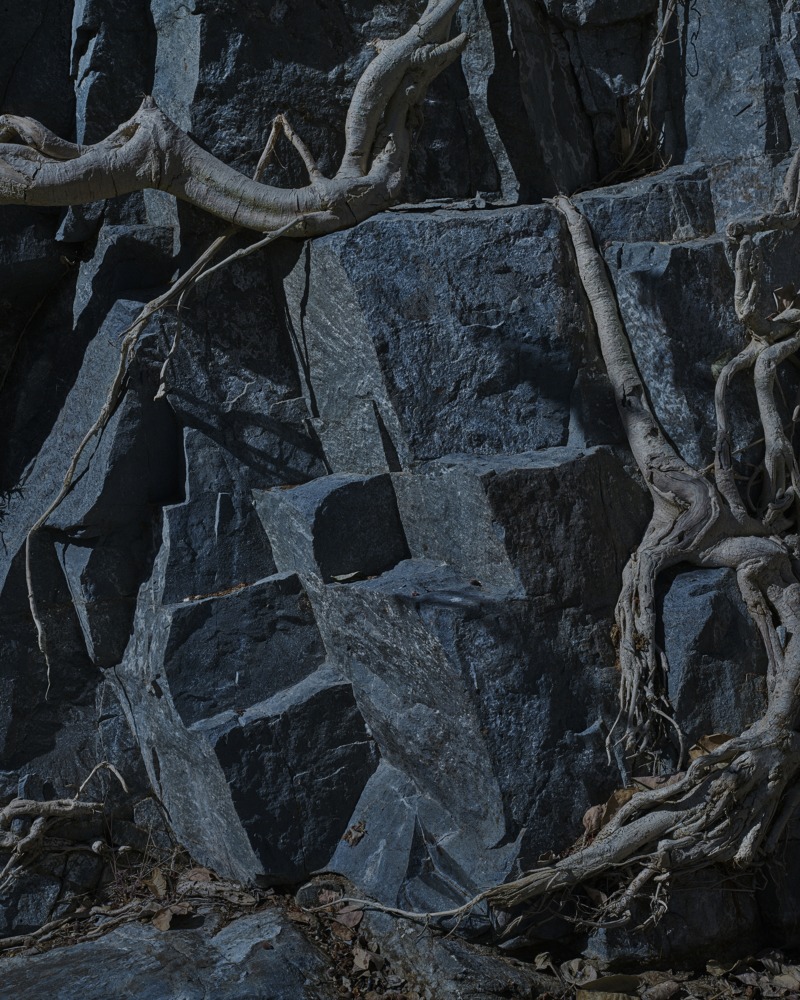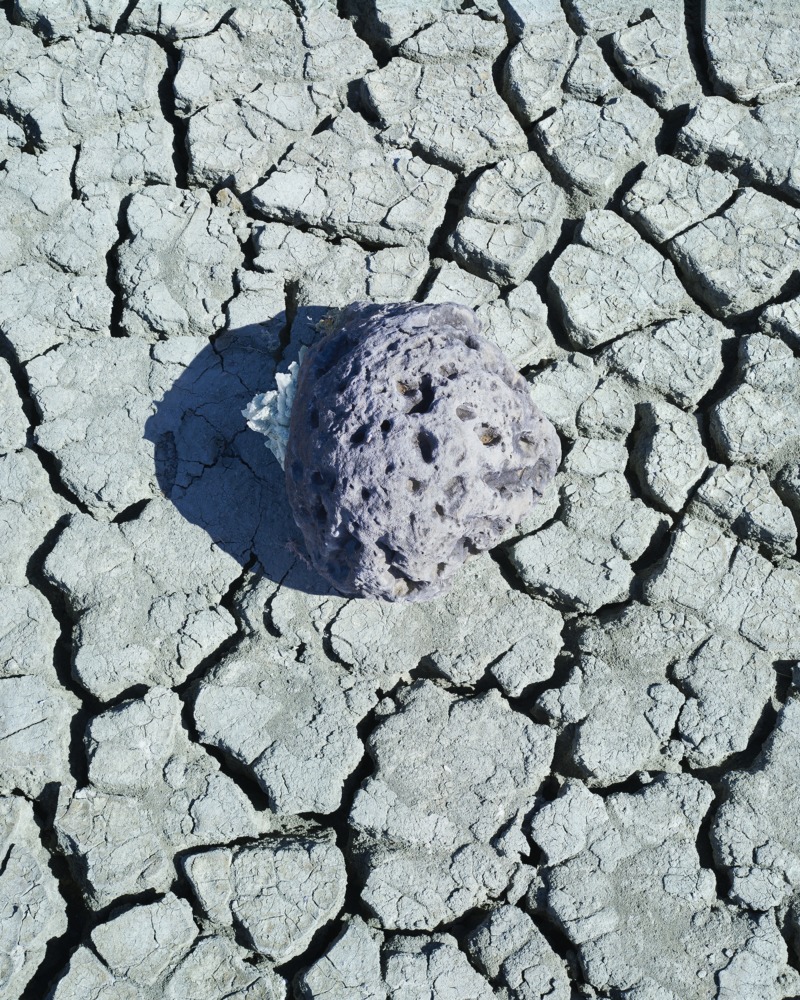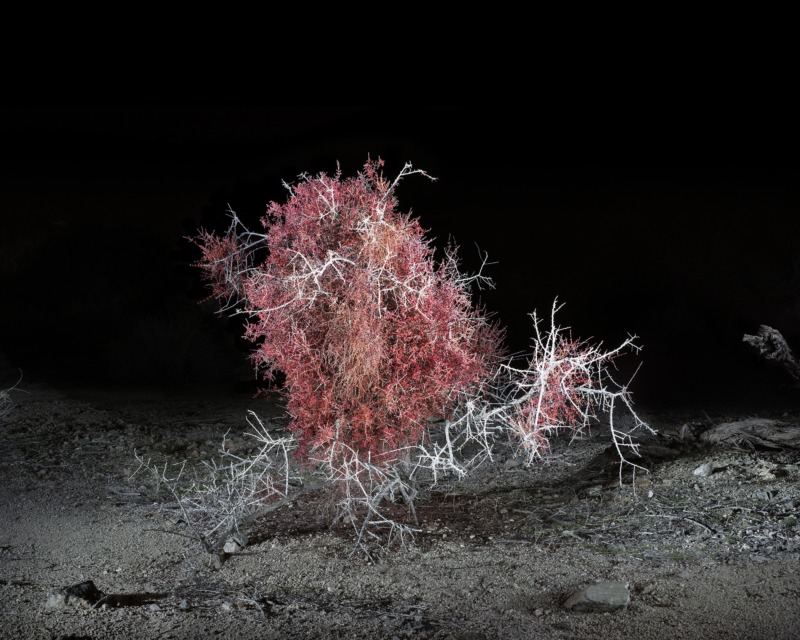Michael Lundgren – Geomancy
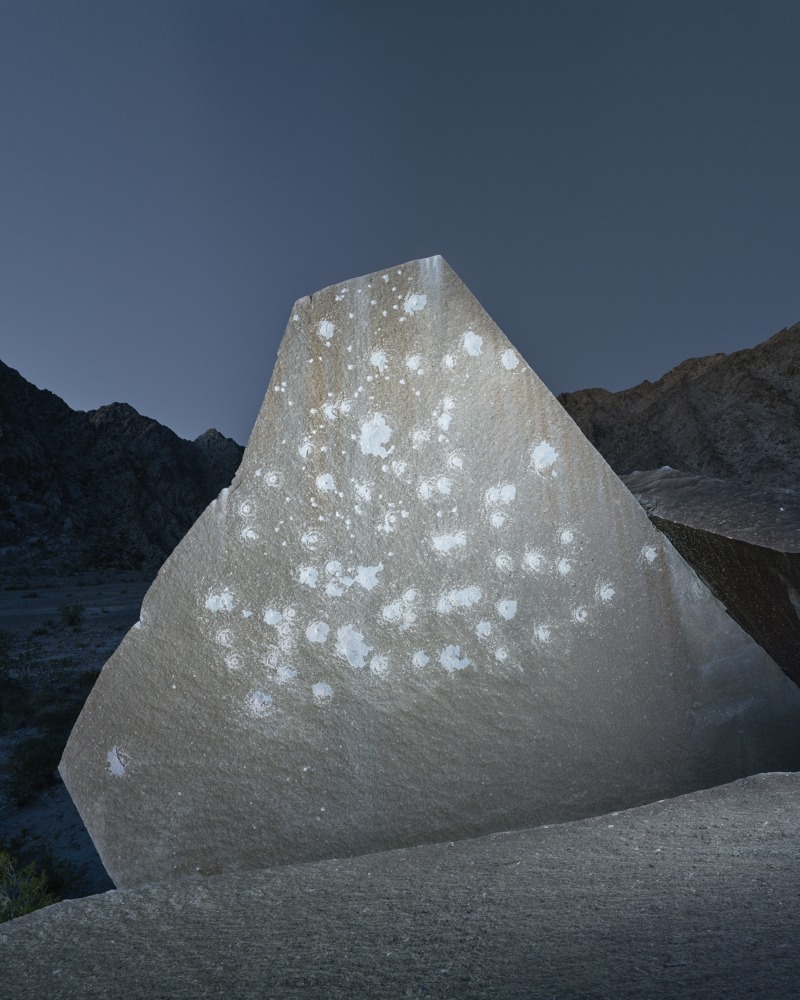
Since the late 1990s Michael Lundgren’s photographic pilgrimages into the deserts of Arizona, Utah and Mexico have been an attempt to restore what he feels we have lost touch with Earth-centred mythology. In Thomas Merton’s book The Wisdom of the Desert, he writes of the 4th-century desert fathers as being ahead of their time. They opened up a new axial age by turning inward toward discoveries of transcendence, a “path that could only be travelled by one who was very alert and very sensitive to the landmarks of trackless wilderness.” Lundgren’s landmark photos are also well-travelled and ahead of the many divergent genres of landscape photography.
The evidence is in his images, distinguished by his ability to be in a place free of any superficial self-constructed approach, and which have a sense of surrendering to the immediacy of the mysterious and transient realities of the desert. In this way he joins a long lineage of not only photographer-explorers such as Timothy O’Sullivan but also those seeking spiritual transformation. His photographic process appears to assume a kind of no-mindedness that has allowed him to capture the landscape without possessing it. Lundgren has assembled a trilogy of work in three monographs, Transfigurations, Matter and the recently published Geomancy, that have been developed over time, picture to picture, all connected by his capacity to capture the numinal in the phenomena of the desert landscape.
Geomancy is not an invitation to visit the locations of his photographs as examples of a particular geological location or vestige, as they could never be found, but are found geomancy that evoke interpretation. Their markings, patterns and objects seemingly could be used to decipher and interpret matters beyond what is shown. They are landscapes less about representation and more about what is absent.
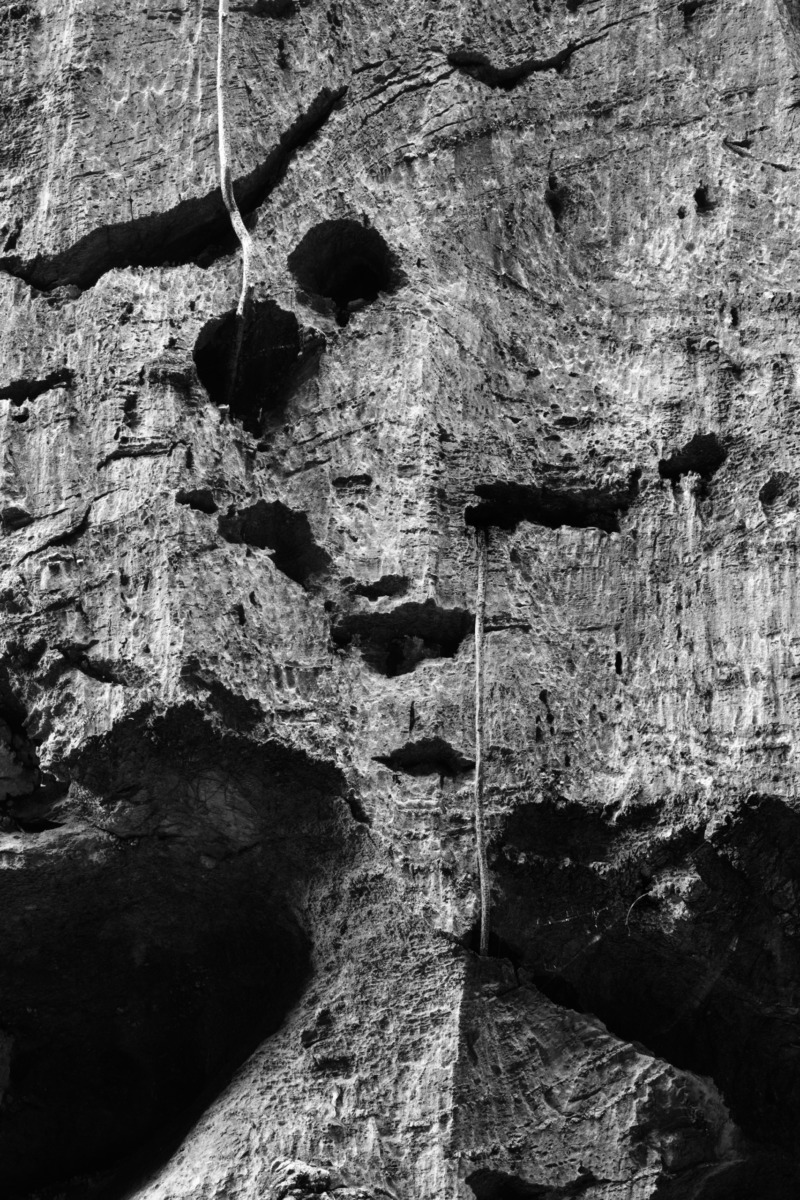
Lundgren’s Roots in Guiengola is not about the Zapotec archaeological location in Mexico. Instead it is imaginably a source of divination if only we can interpret the pattern of roots woven through and emerging from the dark orifices of the rocks.
In the late Shang dynasty, Chinese oracle bones such as the flat belly of turtle shells were used for answering questions by heating them up and interpreting the pattern of cracks that formed. They became the origins of one of the oldest books of divination, the classic I Ching or Book of Changes. Like in geomancy that interprets markings on the ground or the patterns formed by tossed handfuls of soil, rocks or sand, both use random found systems to navigate and comprehend the dynamics of our relationship to others and the environment.
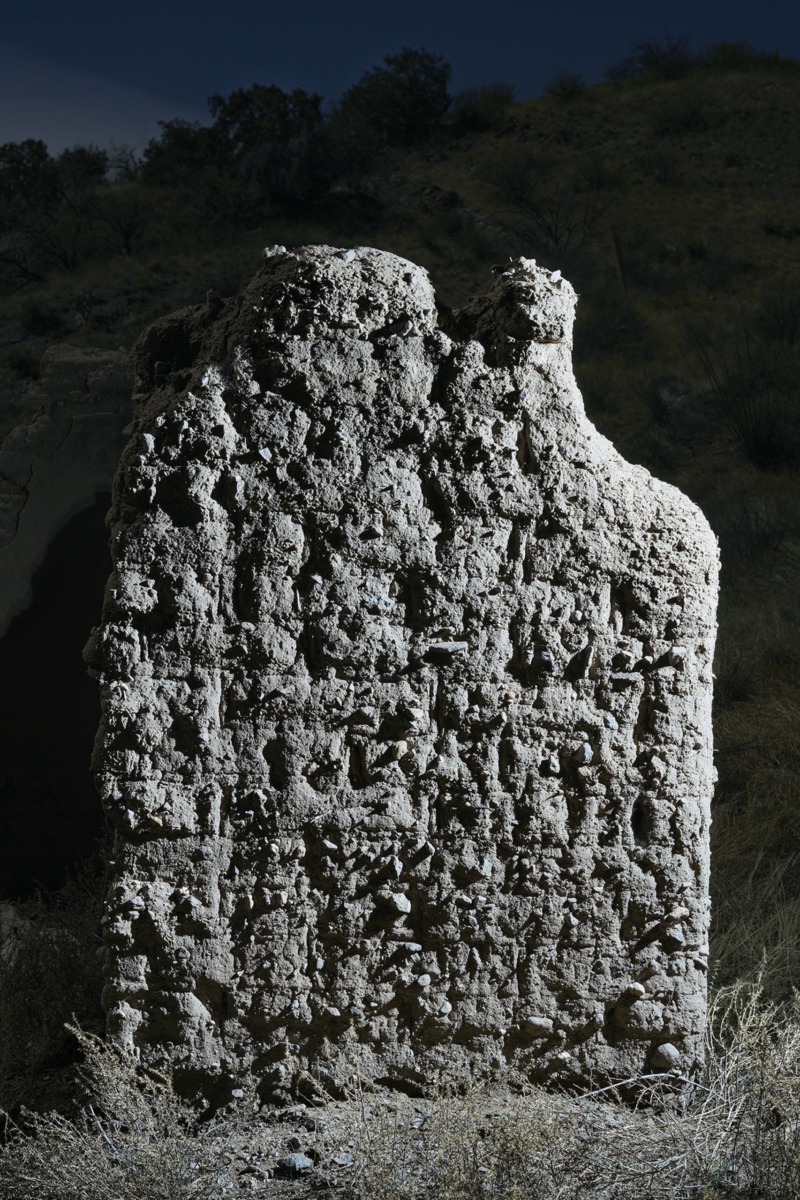
We cannot make out what is imagined to be inscribed on the surface of Lungren’s palimpsest tablet and wonder if its original engravings have been effaced or eroded. They leave us with only the remnants of former knowledge. Or is it a monumental object that marks what is buried beneath it, or a sign post that could point out a direction to take? It is illuminated out of the blackness of its background by an intense single sourced light of a full moon, or like in many of Lundgren’s photographs, artificially lit after night falls to emit an object’s mystery.
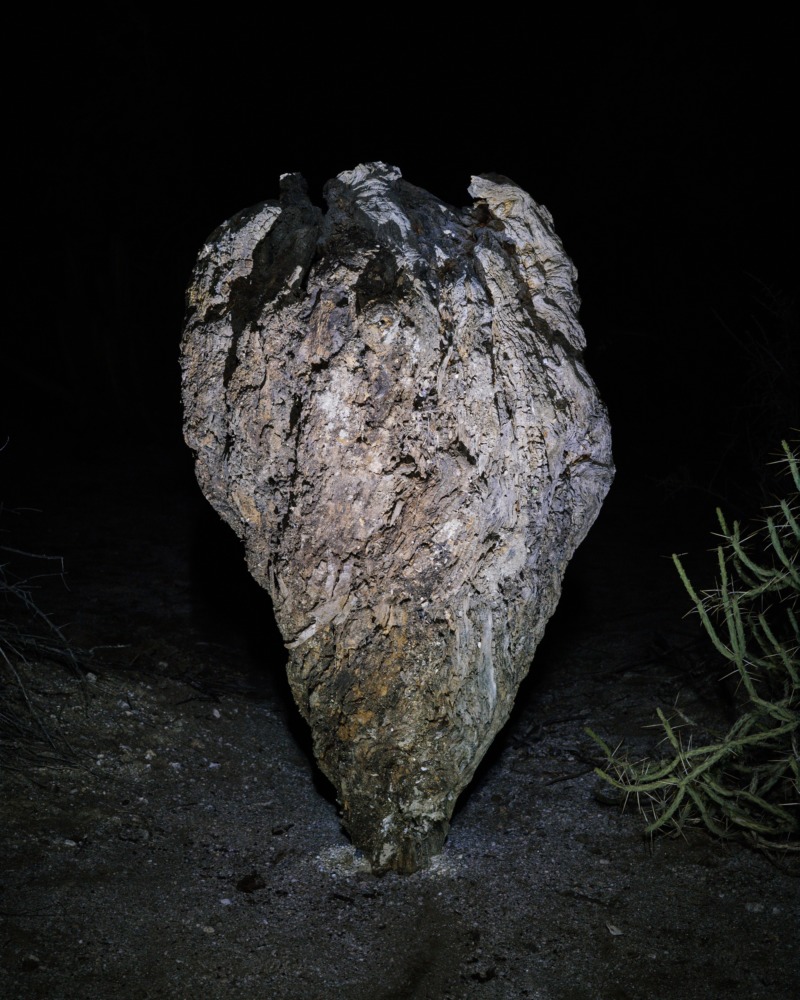
A shroud envelopes, obscures and conceals what it hides from view, usually the dead for burial, but the object in the photo Shroud stands upright inexplicably balanced. Low lit, it looms precarious and ominous, its funnel shape apparently frozen in rotation.
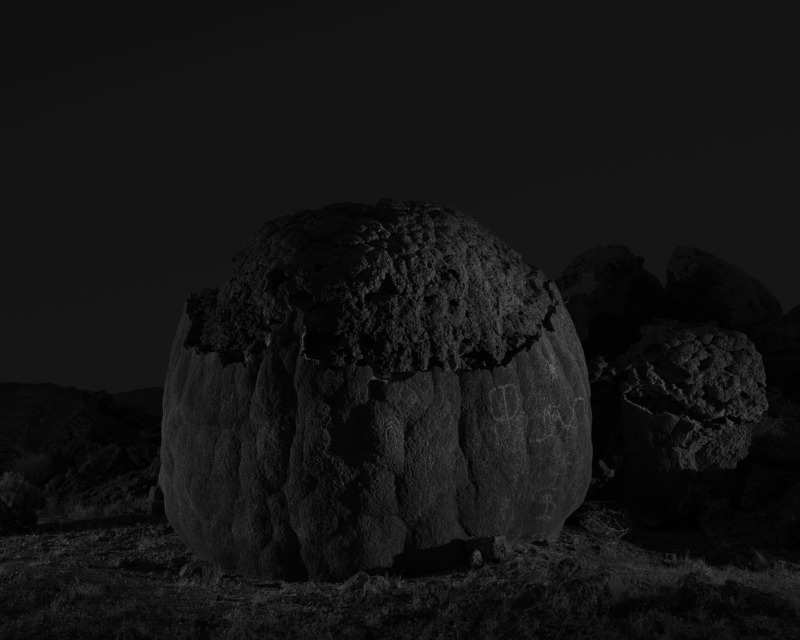
Repeatedly Lundgren’s photos have centrally placed objects that we don’t recognize as belonging to our Anthropocene but of a typology of unknown ancient archaeological origin. Struggling to understand the function of this gourd shaped rock that has been peeled open to reveal its brain, we transform it into a totem of spiritual significance.
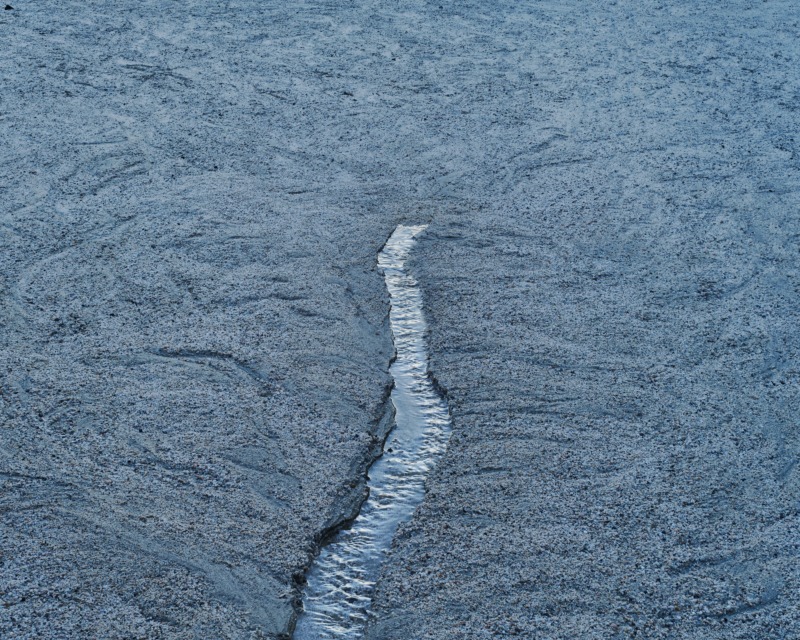
Both haunting and poignant, Current’s stream appears to stand upright without any comprehensible underground source from which it flows and is transformed into a liquid calligraphic figure or sign inscribed onto the rocky ground.
The images in Geomancy bridges what he calls the “pre-human earth” of his first monograph Transfigurations with the iconic objects of his second, Matter and builds surrealistic spaces between them. These are not romanticized representations of the landscape but of something beyond it.
In the 12th-century Zen fascicle, The Mountains and River Sutra, it is written that “mountains are constantly walking” and so, too, are the subjects of Lundgren’s images. They are not static but always changing and confirming our readings of them as subjects of impermanence. We sense that each object or surface shown no longer remains yet their remaining photographic presence emits an equanimity that is reassuring of what is both of us and yet beyond knowing. In Japanese Shintoism sacred locations are designated with enclosing ropes that indicate sacred or pure spaces. In Lundgren’s photographs the frame acts similarly to enclose and designate his images brought back from the trackless wilderness of the desert.
Geomancy (2019) by Michael Lundgren is published by Stanley/Barker.

